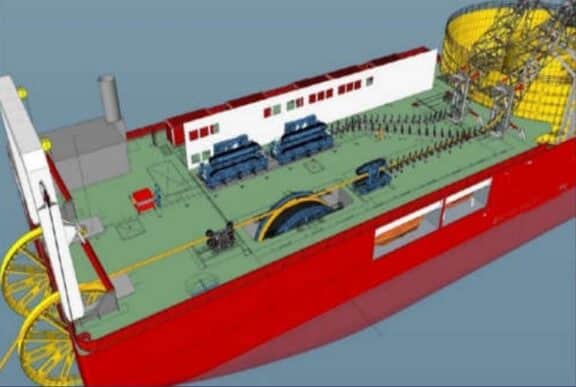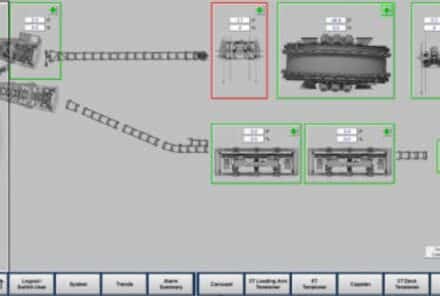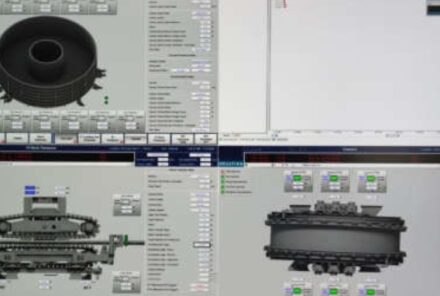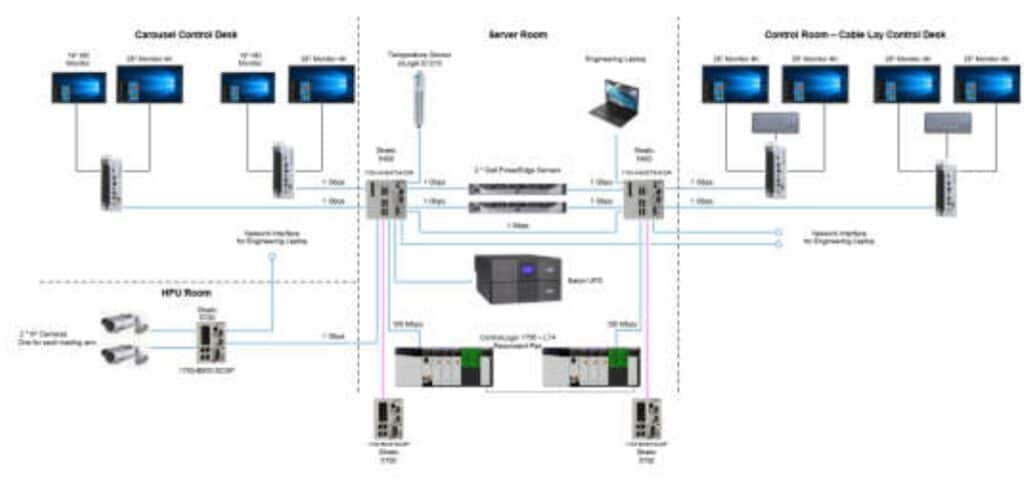SCADA: Control system for a cable laying vessel
- Client: Offshore engineering client (Nexans vessel).
- Norway

Services provided
BGEN were contracted to provide the specialist engineering to design, build, test and document the control system solution for the operation and monitoring of a ship-based cable laying system.
The Cable Laying Vessel (CLV) is designed for the laying, recovering, and repairing subsea HVDC and HVAC cable systems. It features a carousel that is capable of carrying a payload of up to 10 000 tonnes of cable.
The innovative design of the carousel offers two modes of operation: Single Basket; where the carousel stores a single length of cable up to 10 000 tonnes, or Split Basket where the concentric design of the carousel allows it to operate as a ‘carousel in a carousel’ so that two cables can be processed simultaneously.
The Cable Laying System comprises of two firing lines, starboard and port. Each Firing Line consisting of cable handling equipment to transport cable into the Carousel, or to lay cable out from the Carousel onto the seabed.

Control System Solution
Monitoring and control of the cable lay operations is carried out via a distributed SCADA system which provides remote client workstations that are located in two carousel control cabins and in the cable lay control room.
The SCADA system communicates to two Programmable Logic Controllers (PLCs) configured as a redundant system with three Ethernet communications modules for
interface to:
- Drive Control Network
- Deck Remote I/O Network
- Supervisory Network
The drives control Ethernet network communicates to 42 variable speed drives. It consists of 10 switches configured to form a Device Level Ring (DLR) which is a protocol that provides a means to detect, manage and recover from faults in a ring-based network.
The Deck Remote I/O Ethernet is also a Device Level Ring, that is configured to communicate exclusively to all digital and analogue signals located at various locations on the vessel, using distributed I/O modules.
A Safety PLC has also been included on the Deck Remote I/O network to provide SIL2/PLd functional safety for several emergency stop pushbuttons located throughout the ship.


The supervisory network provides communication for the SCADA Servers, Clients and peripheral equipment. The two SCADA servers are configured with ESXi Hypervisor which allows for a collection of Virtual Servers to be installed.
The virtual machines (VMs) are deployed and configured over the two physical servers to provide the full suite of software to satisfy the project requirements.
Redundancy is built into the design by providing paired redundant virtual machines across the two physical servers wherever possible.

